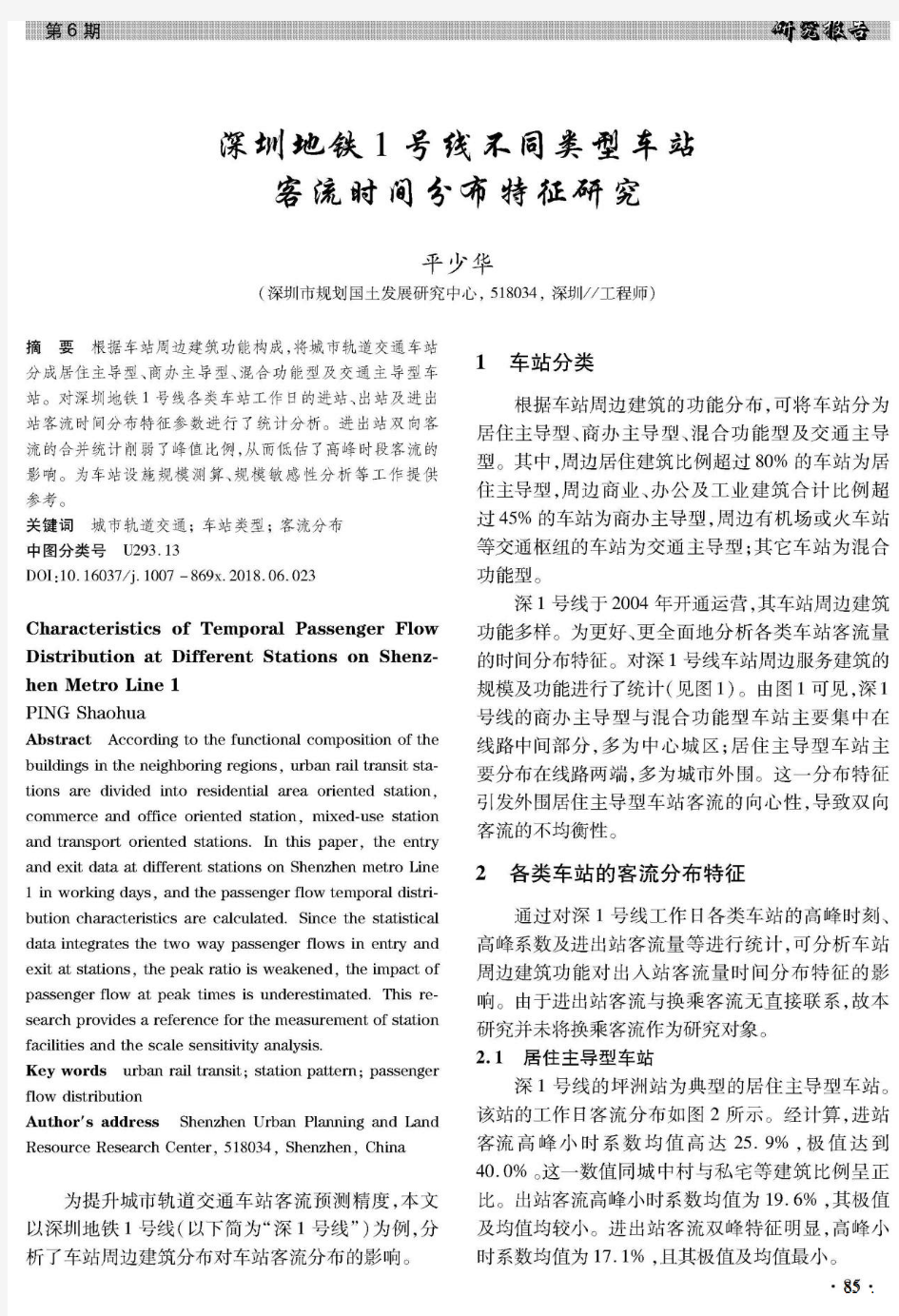

第"期
深"9:1矣塑卑站
VW$ <3% 特征!"
(深圳市规划国土发展中心,518034,深圳//工程师)
摘要根据车站周边建筑功能构成,将城市轨道交通车站
分成居住主$主、混合及主车
站。对深圳地铁1号线各类车站工作日的进站、出站及进出站客流时间分布特征参数进行了统计分析。进出站双向客流的合并统计削弱了峰值比例,从而低估了高峰时段客流的影响。为车设施、性分析作提供参考。
关键词城市轨道交通;车站类型;客流分布
中图分类号U293.13
D01:10.16037/j. 1007 -869x. 2018.06.023
Characteristics of Temporal Passenger Flow Distrilbution at Different Stations on Shenz-hen Metro Line 1
PING Shaohua
Abstract According to the functional composition of the buildings in the neighboring regions,urban rail tr^sit sta-tions are divided into residential area oriented station,commerce andoffice orientedstation,mixed-use station and transport oriented stations. In this paper,the entry and exit data at different, stations on Shenzhen metro Line 1rn w o rk ig days,and the passenger flow temporal distri-bution characteristics are calculated. S ic e the statistical datt integrates the two way passenger flows inentry and exit at stations,the peak ratio is weakened,the impact of passenger flow at peak times is underestimated. This re-search provides a reference for the measurement of station facilities and the scale sensitivity analysis.
Key words urban rail transit %station pattern %passenger flow distribution
Author’s address ShenzhenUrban P l anning and Land Resource Research Center,518034,Shenzhen,C h ia
为提升 轨道交通 客流预测精度,本文以深圳地铁1(以下简为“深1”)为,分析了 建筑分布对 客流分布的影响。1车站分类
根 建筑的功能分布,可将 分为型、型、混合能型及交通主导型。其中,建 超过80%的为居型,业、办公及工业建筑合 超过45%的为 型,场或火
等交通 的为交通 型;其 为混合能型。
12004年开通运营,其 建筑能多样。为更好、更全 分析各类 客流量的分布特征。对1务建筑的规模及功能进行了 (1)。1,1的型 合功能型 要集中在线路中 分,多为中 %型
要分布在线路,多为 围。这一分布特征发外围 型 客流的向心性,导致向
客流的不均衡性。
2各类车站的客流分布特征
通过对深1工作日各类 的高 、高 及进出站客流量等进行 ,可分析 '建 能对出 客流量 分布特征的影响。进出站客 客 直接联系,故本并未将换乘客 为对象。
2.1 主导型车站
深1的洲站为典型的居住主导型车站。
的工作日客流分布 2 。经算,进
客流高峰小 均值高达25. 9%,极达到40.0%。这一 中村与私宅等建 正比。出客流高峰小均值为19. 6%,其极值及均值均较小。进出站客 特征明显,高峰小均值为17.1%,且其极值及均值最小。
.85 .